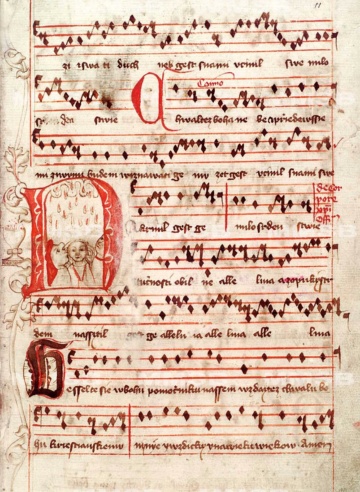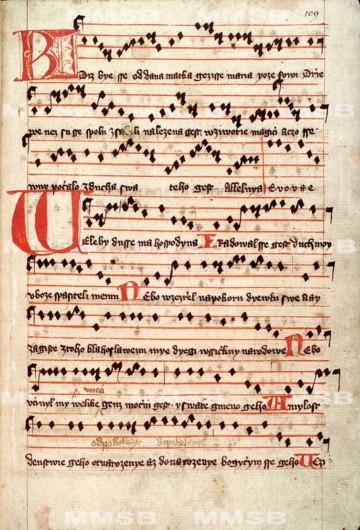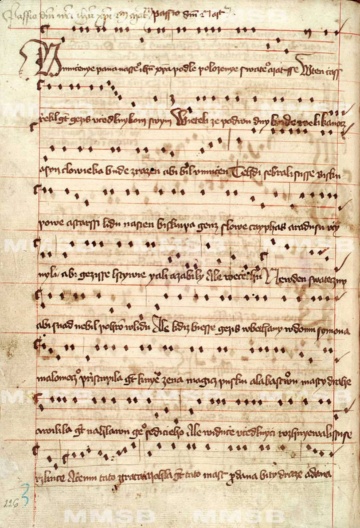Czech Hussite Liturgy
At the latest by the 1420s, a form of Czech liturgy had been created in Prague for both Mass and the Liturgy of the Hours based on a translation of the Latin liturgy. We only know of its existence due to the fortunate find in 1872 of a manuscript at a parsonage in Jistebnice, South Bohemia, where it came as late as the 16th century. For a long time, experts have discussed the circumstances and place of origin of this unique project. Today the prevailing opinion is that a significant contribution to the Czechification of the Roman liturgy was made by the community of monks at the Emmaus Monastery in Prague, where in all likelihood the Czech liturgy was also practised in the 15th century. Certain Czech liturgical chants carry traces of Hussite ideology. In the repertoire for the Feast of Corpus Christi, several texts can be found that highlight receiving both the Body and Blood of Christ – i.e. communion under both kinds. Overall however the repertoire remains musically and lyrically faithful to the form of the Prague liturgy at the start of the 15th century, with all the specifics in the realm of choice of chant, melody and form.
Florilegium provides mini-editions of typical samples of Czech Hussite liturgical chants.






